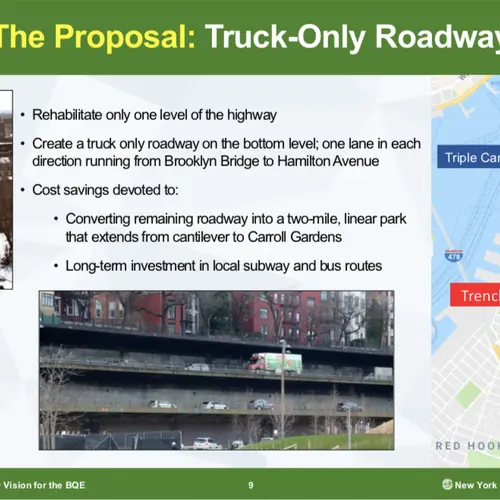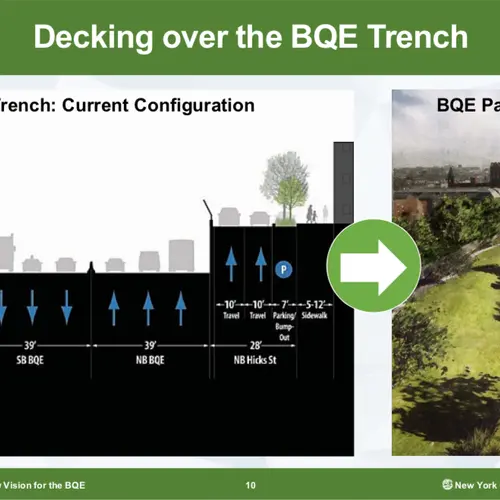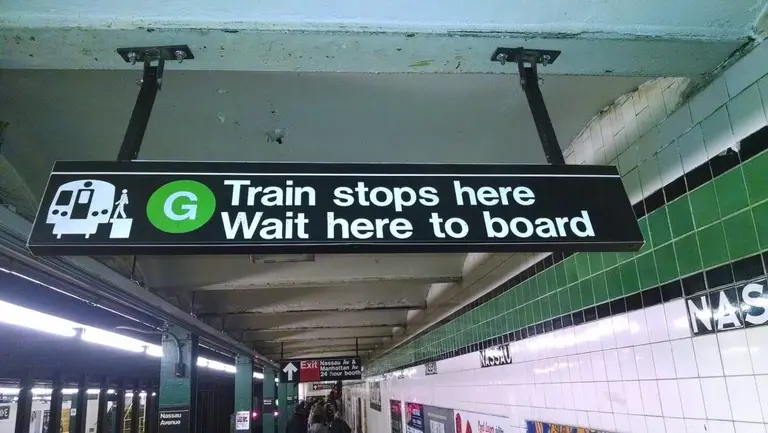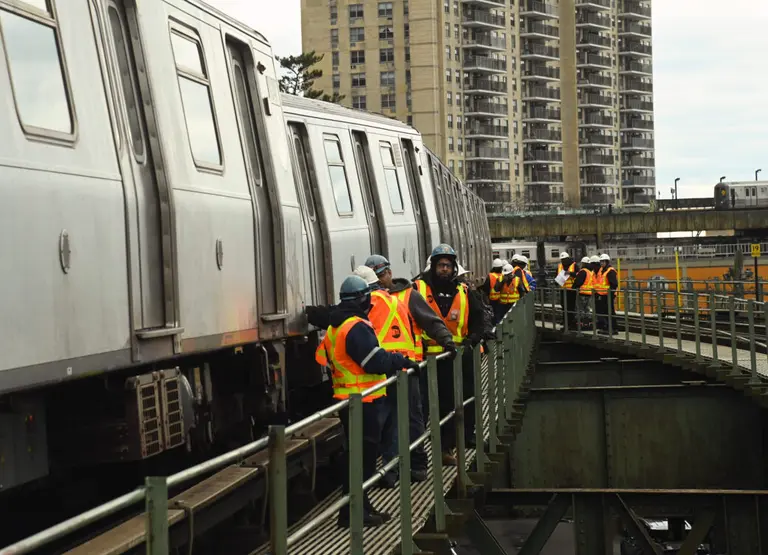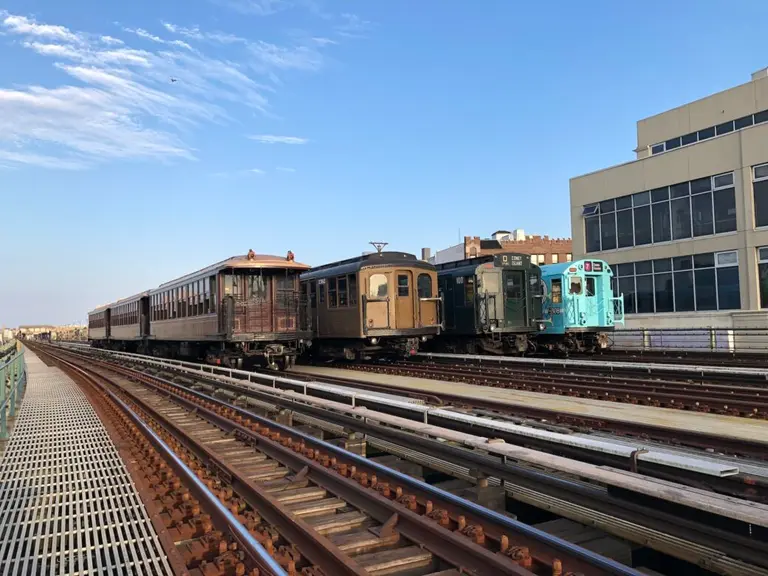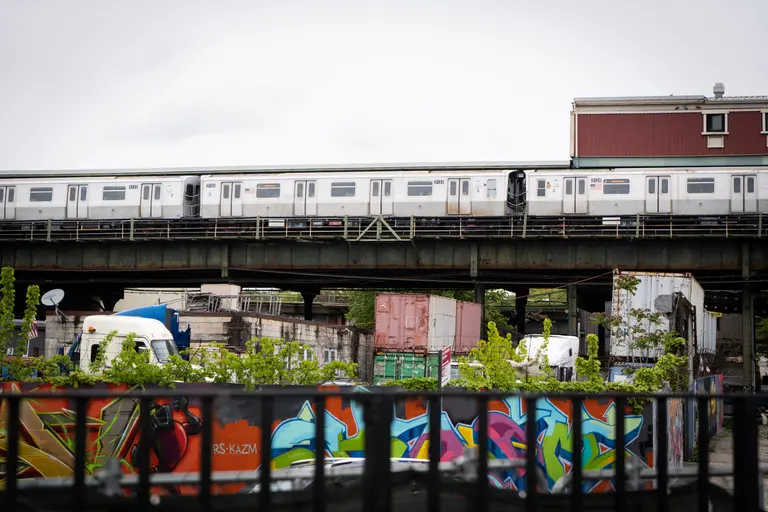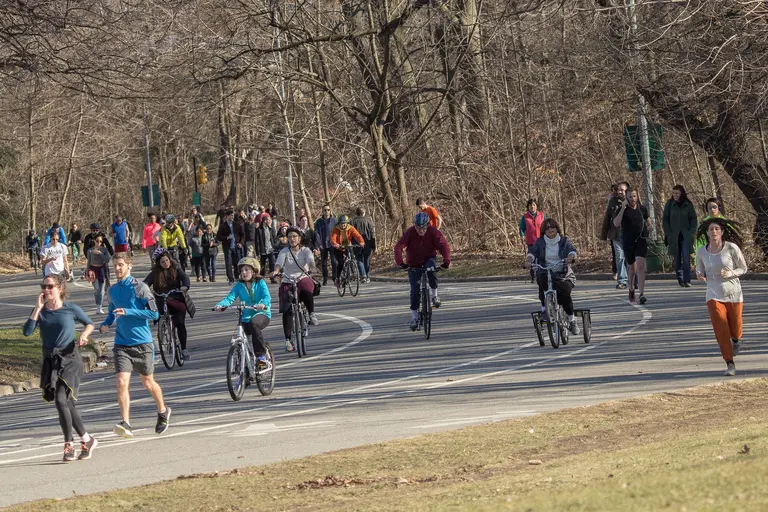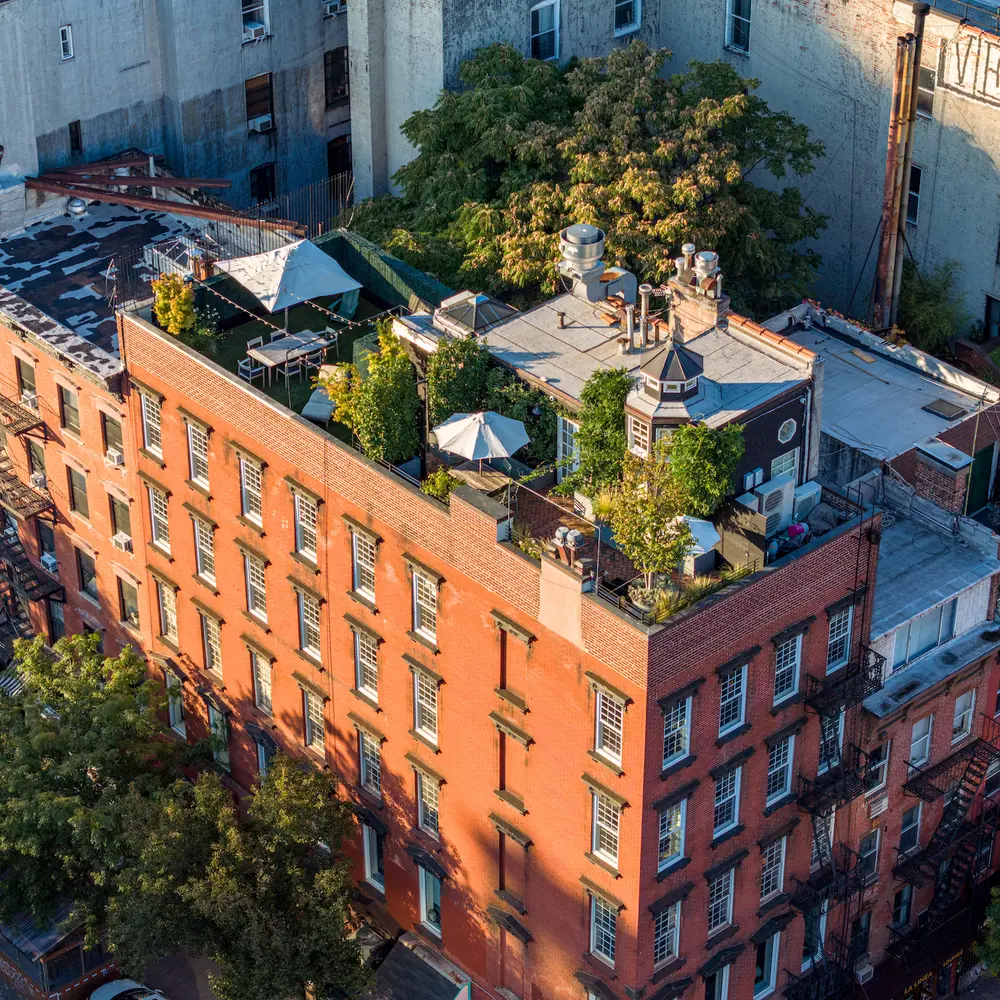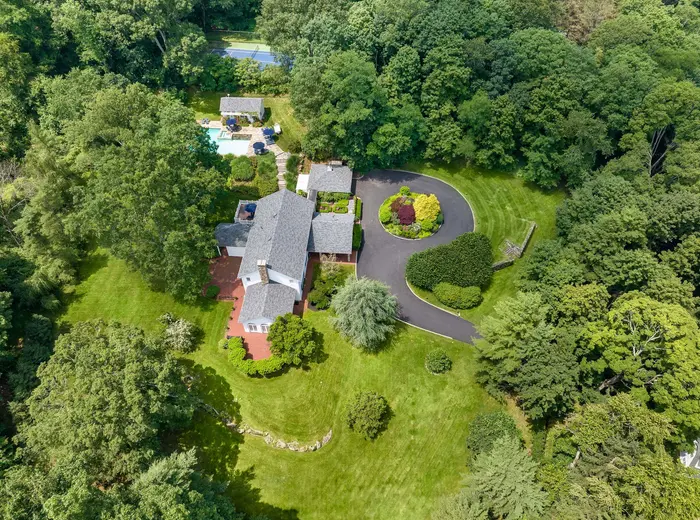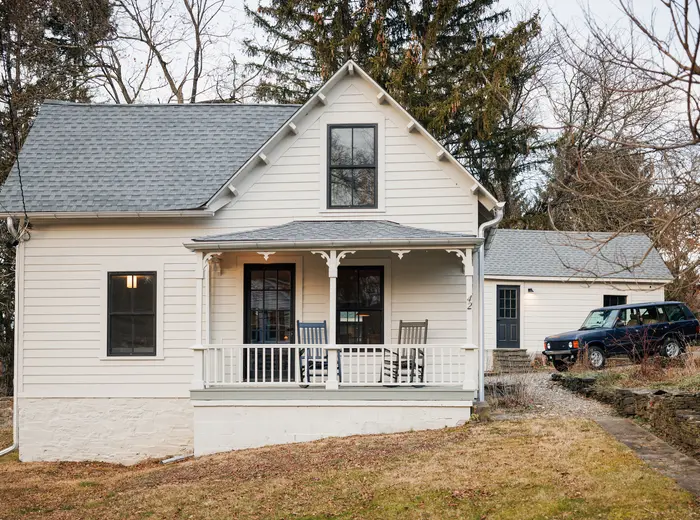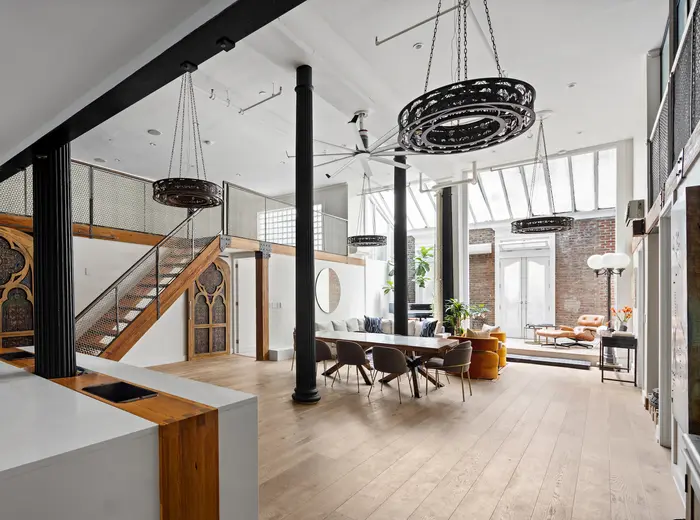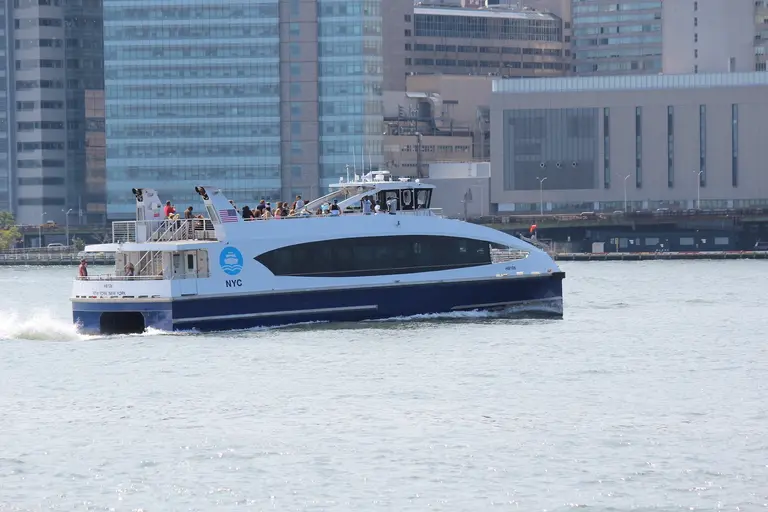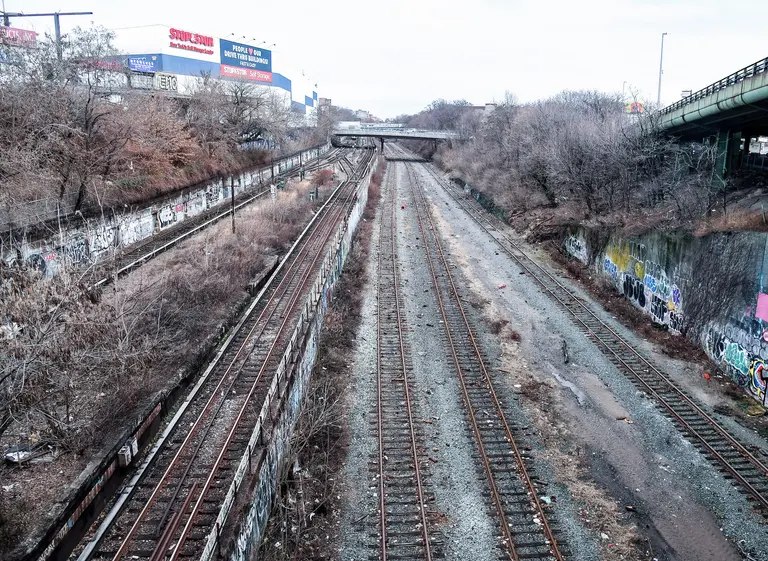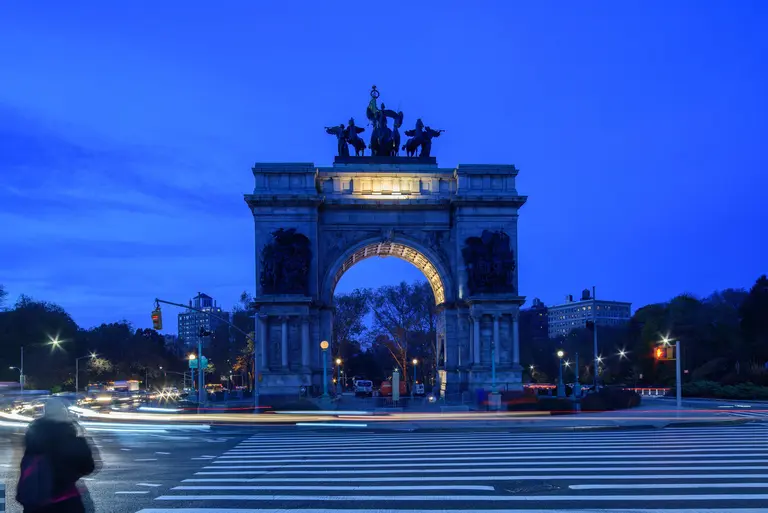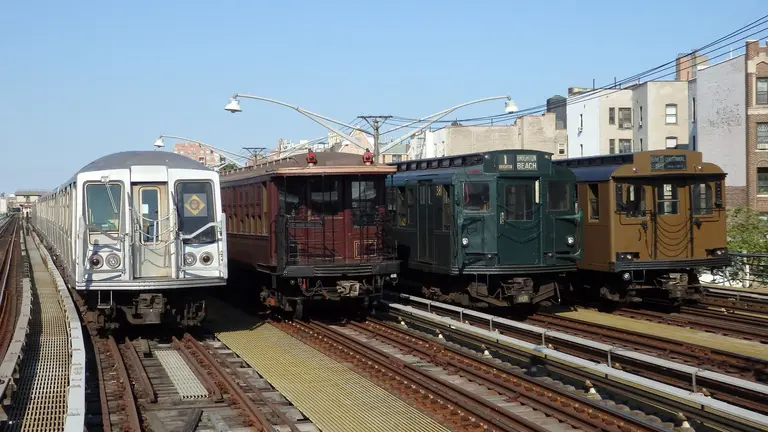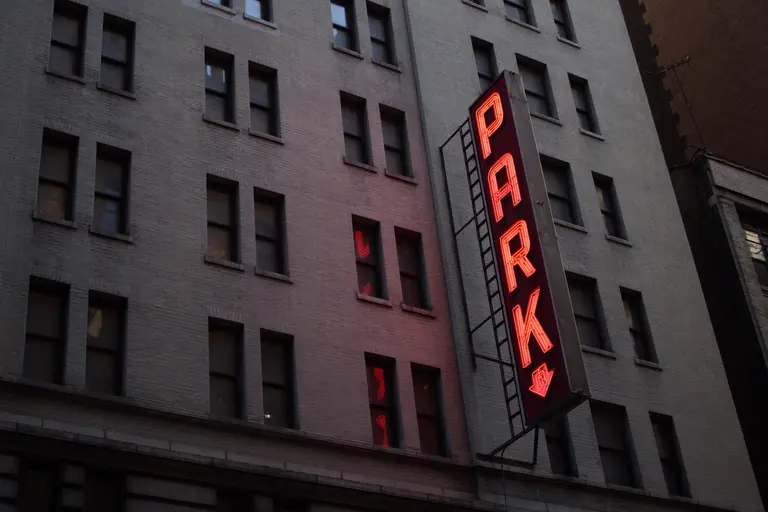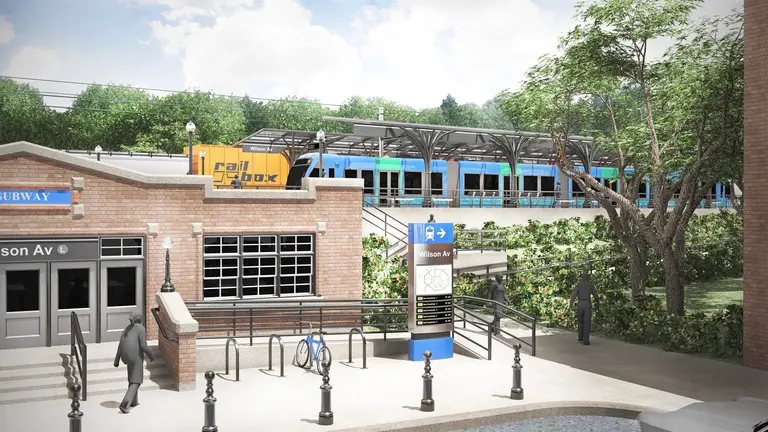NYC Comptroller proposes turning the BQE into a truck-only roadway with a park on top
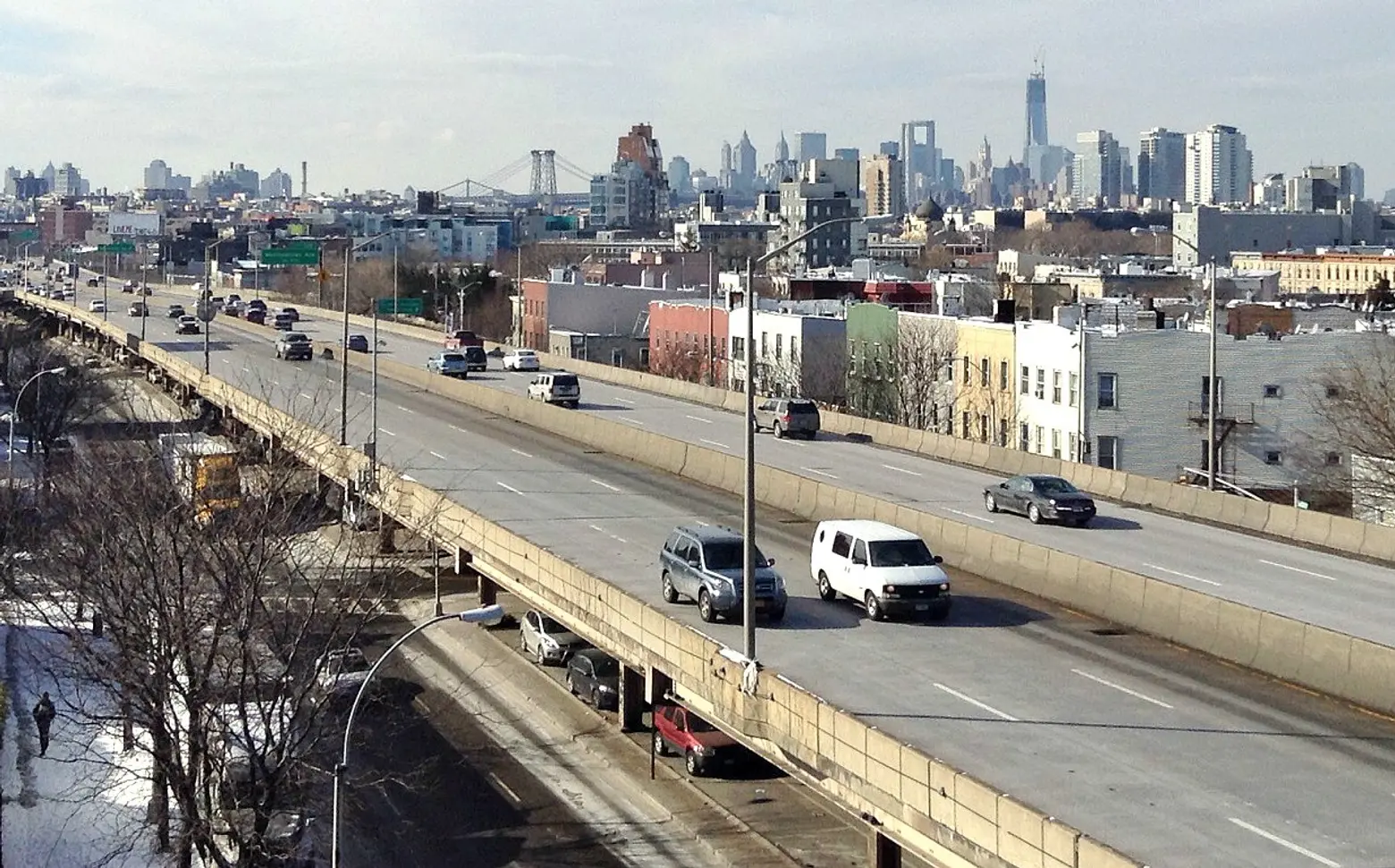
Via Wikimedia
Adding another perspective to the many voices who are seeking a solution to the “most challenging project not only in New York City but arguably in the United States,” City Comptroller Scott Stringer has outlined his own proposal to save the crumbling BQE, advocating for a middle-ground solution to the heated debate. Stringer’s idea (notably without a timeline or proposed budget) is to turn the BQE into a truck-only highway and build a linear park above. “We remain hopeful that the agency can view the BQE’s deterioration not just as an engineering challenge, but as an opportunity to create something new and bold that both accommodates essential traffic and enhances surrounding neighborhoods,” he wrote in a March 7 letter to Department of Transportation Commissioner Polly Trottenberg.
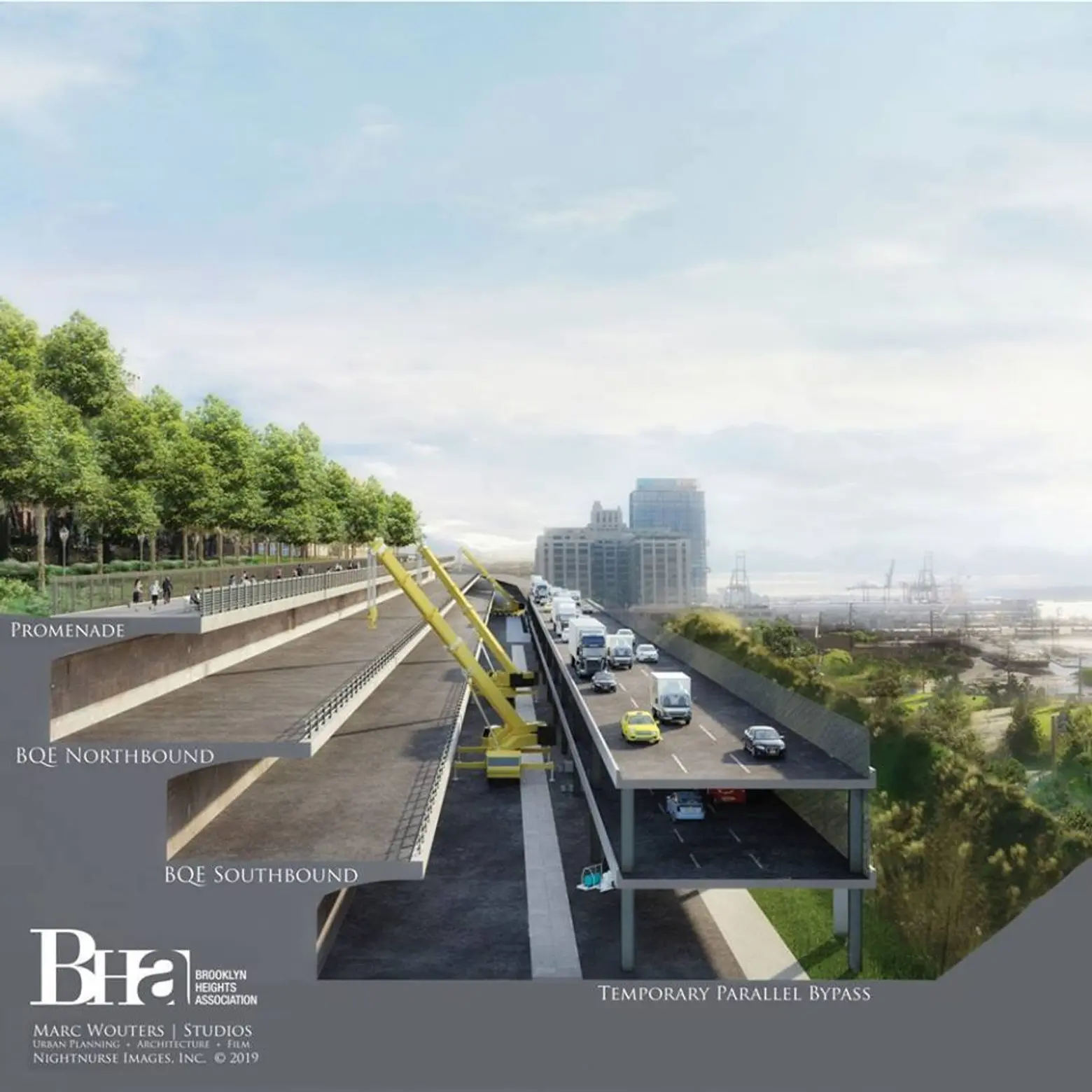
A rendering of the BHA proposal to create a two-tiered bypass, leaving the promenade open; Via Marc Wouters Studios
As 6sqft previously explained:
Last September, the city’s transportation department announced two options to repair the Brooklyn Heights and DUMBO section of the BQE. One plan would divert cars to an elevated highway next to the promenade and take six years to complete, with the other replacing the BQE lane by lane over eight years. Both plans would require the Brooklyn Heights Promenade to close temporarily.
Along with a Better Way NYC, the Brooklyn Heights Association presented in November an alternative plan that would not require the promenade to temporarily shutter. The plan, developed by Marc Wouters Studios, would involve building a two-tiered structure west of the triple cantilever, instead of building a highway on the promenade. This would allow for the promenade to remain open during construction.
Stringer notes that a teardown of the BQE’s triple-cantilever section would not be without precedent, citing examples in Portland, Paris, San Franciso, and Seoul where a freeway was removed and replaced with parks and plazas. However, Stringer emphasizes that each of those cases were car-only parkways, while the BQE rehabilitation poses a different challenge because 14,000 trucks cross it every day, with 1,100 per hour at peak volume.
“We can’t redirect those trucks on to local streets, we don’t have enough freight routes in the city, and this section of the BQE serves an essential manufacturing and warehouse corridor from Sunset Park and Red Hook to the Brooklyn Navy Yard and North Brooklyn,” he states.
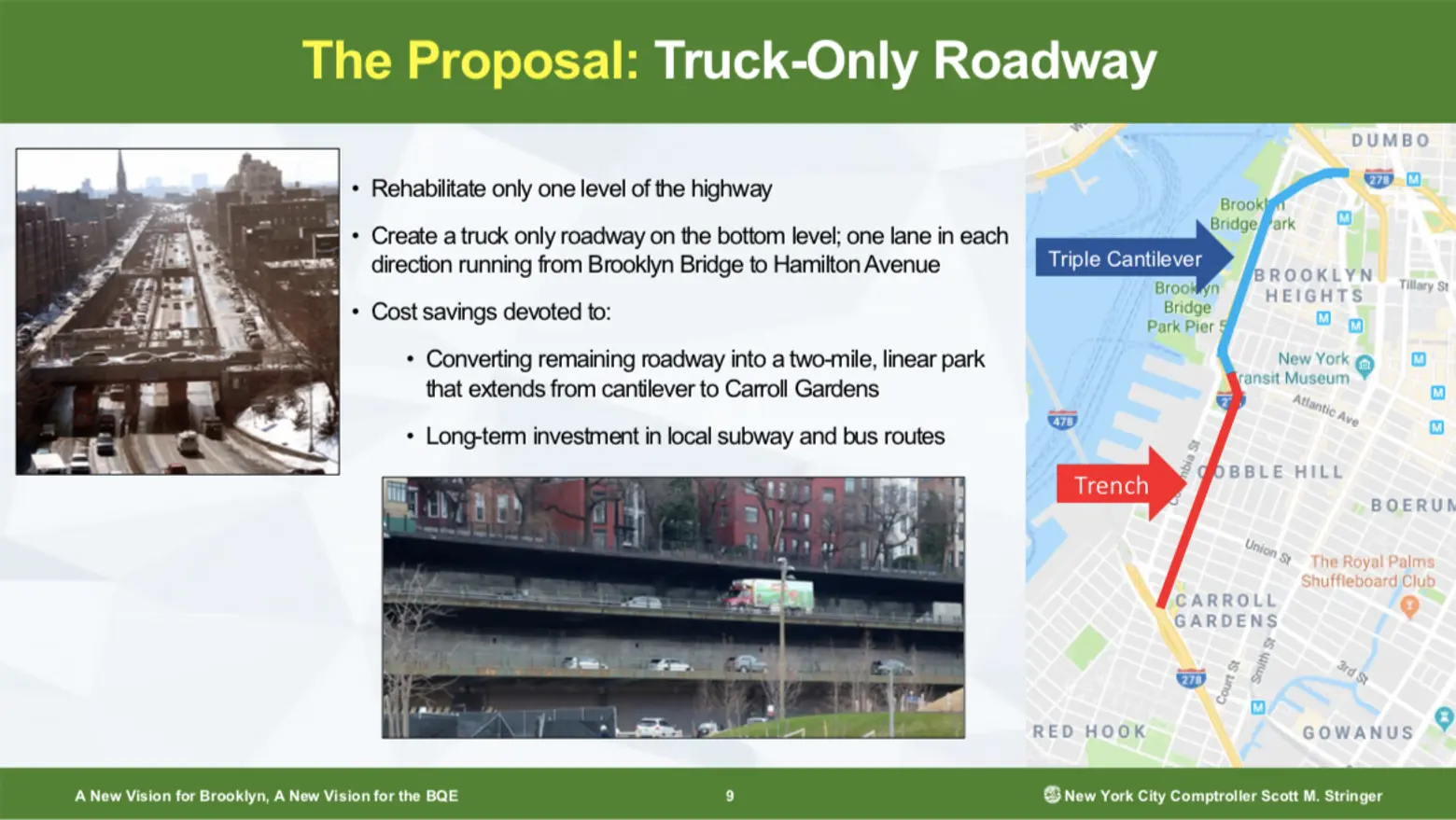
A page from Stringer’s proposal outlines his idea to turn the BQE into a truck-only roadway
Stringer’s proposed solution is to convert the triple cantilever and the Cobble Hill trench into a truck-only highway with a linear park on top that would start under the Brooklyn Bridge in DUMBO and stretch almost two miles to Hamilton Avenue in Carroll Gardens.
Under this proposal, to avoid the need for a temporary highway, trucks would run in both directions on the middle-level of the cantilever while the DOT works on the bottom level. Once the rehabilitation work is complete, truck traffic would permanently move to the bottom section.
Cost savings from this approach could be put toward building a new, linear park. Stringer cited Klyde Warren Park in Dallas as a project of similar scope, which was completed in 2014 and cost $110 million. Previous proposals for decking over the BQE in Williamsburg and Cobble Hill, according to Stringer’s letter, have been estimated as costing $125 million.
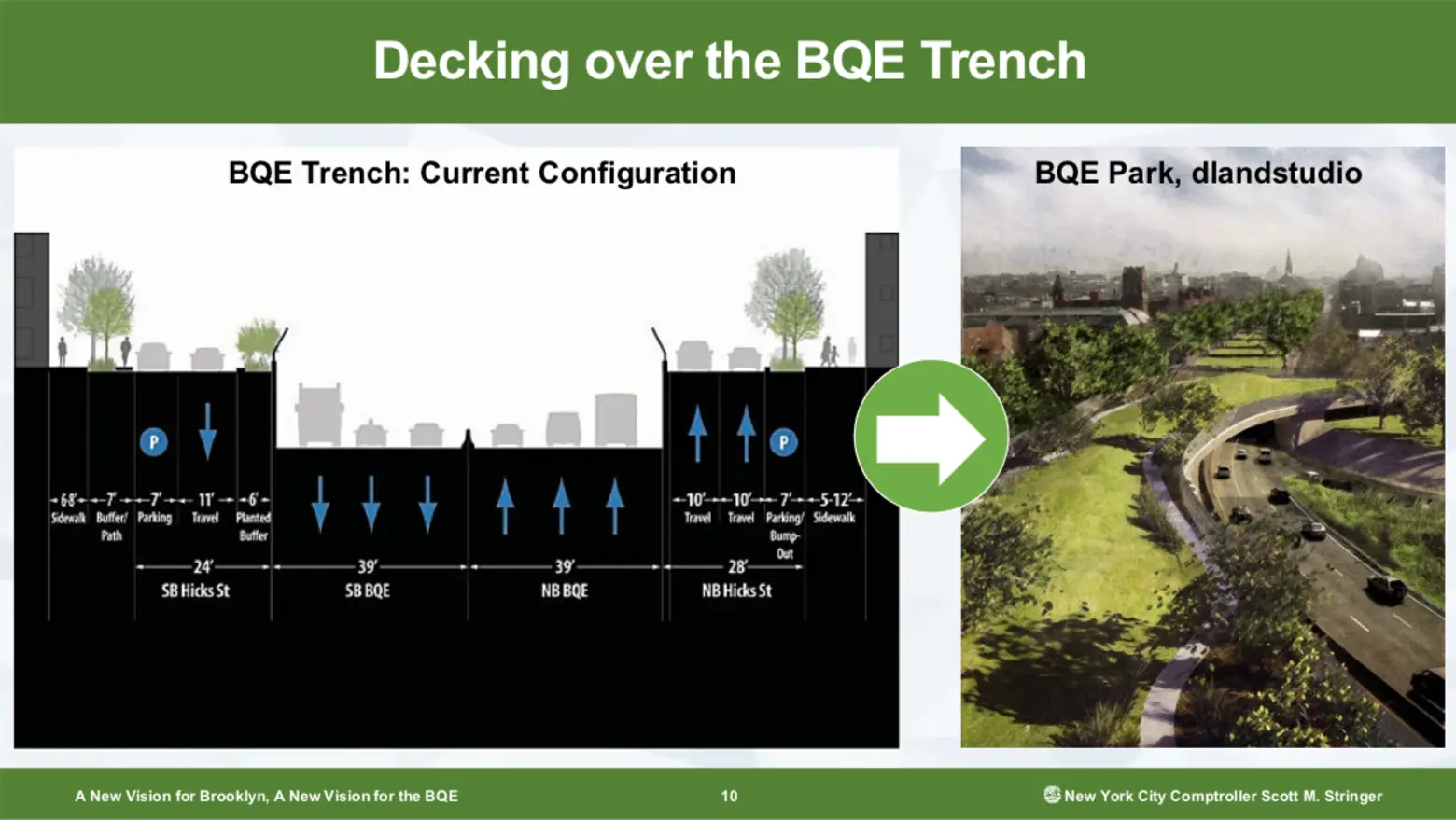
A page from Stringer’s proposal shows how the BQE could become a world-class, vibrant green space for the city.
While Robert Moses appeased Brooklyn Heights residents by building the Promenade, this left Cobble Hill with a loud, polluted “gash running directly through the heart of the neighborhood.” Stringer sees this as an opportunity to rectify this mistake and create “a world-class green space, but also a direct connection to the Promenade and Brooklyn Bridge Park for pedestrians and cyclists…weaving Cobble Hill and adjacent neighborhoods back together.”
Wondering how this proposal would impact the roughly 153,000 passenger cars that use the BQE every day? Stringer believes that the Hugh Carey Tunnel, the Belt Parkway, carpooling, and public transportation options will absorb all of that traffic, noting that “of course, an in-depth traffic study will be necessary to evaluate this proposal.”
“It is important to acknowledge that restricting access to the triple cantilever and the Cobble Hill trench will likely reduce traffic,” he says. “ As we’ve seen time and again across the nation, highway traffic follows an iron rule: build more highways, get more cars; eliminate highways, get fewer cars.”
Moreover, Stringer advocates that with many Brooklyn bus routes being redesigned and expanded over the next two years, the timing is right for his proposal. “With more bus lanes, higher frequency service, better designed bus routes, express bus access to the truck-only sections of the BQE, and greater City investment with the dollars saved from a scaled-down triple-cantilever rebuild, the public transit system will be well positioned to absorb the automobile trips.”
Early responses to Stringer’s plan are largely positive. “Comptroller Stringer has stepped up to the plate with the problem-solving mentality New Yorkers expect from their elected representatives,” said Hilary Jager of A Better Way NYC to Gothamist. The Comptroller’s innovative proposal is a boon to the pursuit for a better way, and it has the potential to transform the City to become a beacon of progressive promise rather than a relic of Moses’s past.”
The next steps required to move Stringer’s proposal forward are meetings with community stakeholders and relevant State agencies, in addition to a traffic study and environmental review process, which is expected to begin later this year, and take up to two years.
[Via Gothamist]
RELATED:
